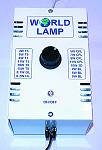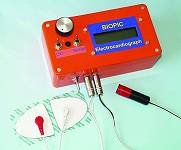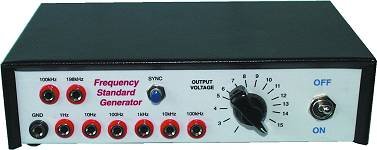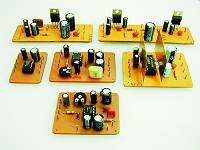
![]() World Lamp
World Lamp
Cheap to build, EPE presents this simple and efficient unit that provides
low cost lighting when there is no mains electricity supply available.
Operating from a 12V supply, it uses widely available parts that can be
built the world-over with ease. It lights almost any fluorescent tube
that does not have a starter or ballast built in, rated from 100mW up
to 15W, plus neon indicators and glow lamps as well.
![]() In July
2002's issue we advised that where VR1 should be turned clockwise, this
should read anti-clockwise, and vice versa.
In July
2002's issue we advised that where VR1 should be turned clockwise, this
should read anti-clockwise, and vice versa.

![]() BioPIC
Heartbeat Monitor - the heartbeat rhythms that keep you ticking can
be measured using our sensitive PIC-based electrocardiograph design with
EPE's free source code.
It has a built-in LCD display with digital real time heartbeat count for
standalone use, or use with a PC instead (LCD waveform is disabled) with
our free QBasic Biopic standalone program also available free. Battery
operation only. Biopic uses adhesive electrode pads or an alternative
thumb pulse detector. Many more features too numerous to list here.
BioPIC
Heartbeat Monitor - the heartbeat rhythms that keep you ticking can
be measured using our sensitive PIC-based electrocardiograph design with
EPE's free source code.
It has a built-in LCD display with digital real time heartbeat count for
standalone use, or use with a PC instead (LCD waveform is disabled) with
our free QBasic Biopic standalone program also available free. Battery
operation only. Biopic uses adhesive electrode pads or an alternative
thumb pulse detector. Many more features too numerous to list here.
![]() In the Feb.
2003 issue we advised that some readers have reported that insufficient
voltage/ current is being supplied by their PC's serial port to drive
the output side of the 740L6000 optoisolator recommended as a replacement
for the obsolete TLP215 device. The voltage at pin 6 of this i.c. should
be about +5V.
In the Feb.
2003 issue we advised that some readers have reported that insufficient
voltage/ current is being supplied by their PC's serial port to drive
the output side of the 740L6000 optoisolator recommended as a replacement
for the obsolete TLP215 device. The voltage at pin 6 of this i.c. should
be about +5V.
It is suggested that readers with this problem use the 740L6010 device instead, which requires less current, but it is an open collector device and a resistor of, say, 1k should be wired between its output (pin 5) and the +Ve line from the PC. However, if you intend to only use the thumb probe (and NOT monitor your heart using chest probes), the opto-isolator could be powered at 5V from the unit's own supply.
Also note that unless a "crossover" cable is used, the signal connection from IC5 pin 5 should go to the D-connector (socket SK3) pin 2, not pin 3 as shown in Fig.2 and Fig.3. SK3 is a 9-pin female type. A suitable cable is a D-range 9-way male to female (straight through). Maplin part number at the time of writing is VD73Q.


Also in the the 2002 issue: new Technology Update describes the world of glass and silver high-speed non volatile memories. Circuit Surgery tells you the correct way to use X-Class and Y-Class capacitors safely on mains supplies. Interface - our PC Interfacing feature - shows how to access serial ports via the mscomm control. Net Work (our Internet page) delivers a briefing on UK broadband access and the exciting applications that are in store for users in the future.